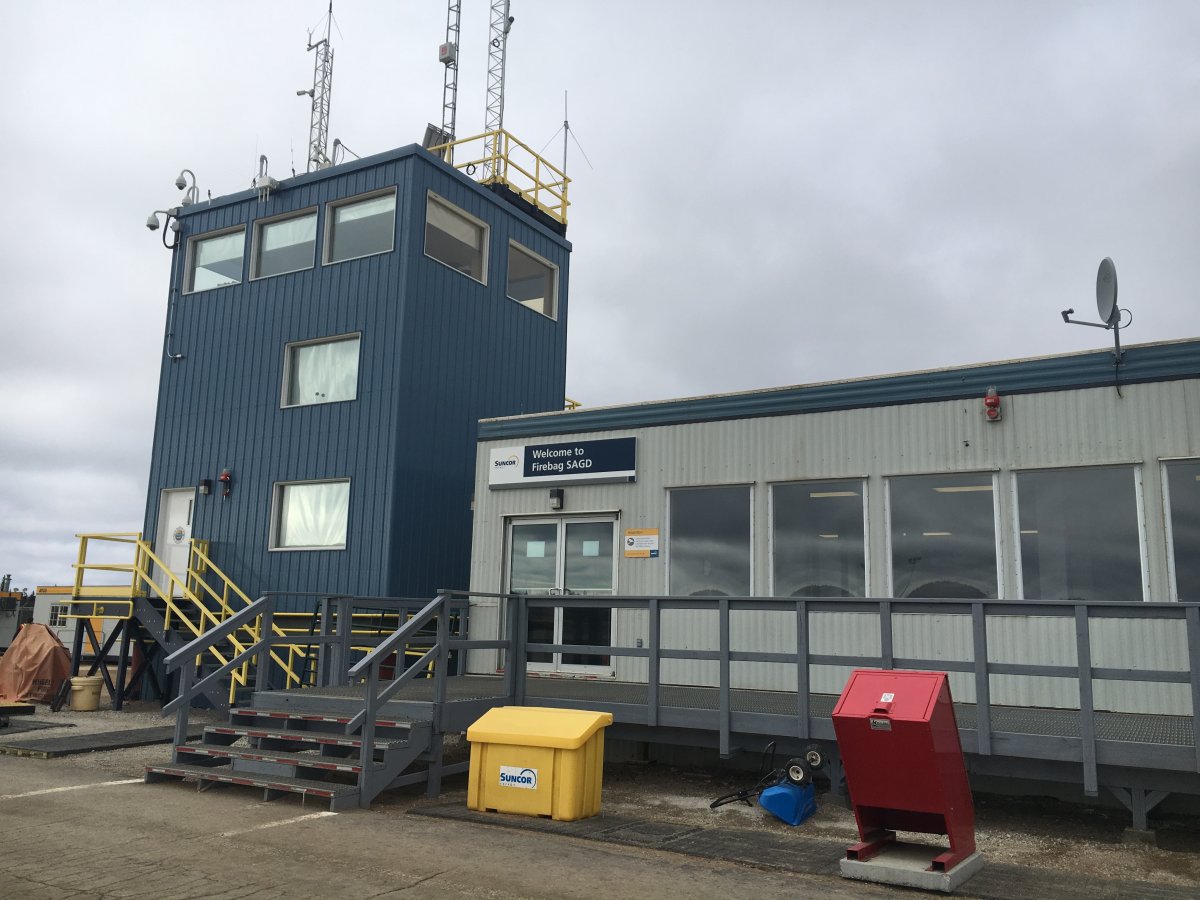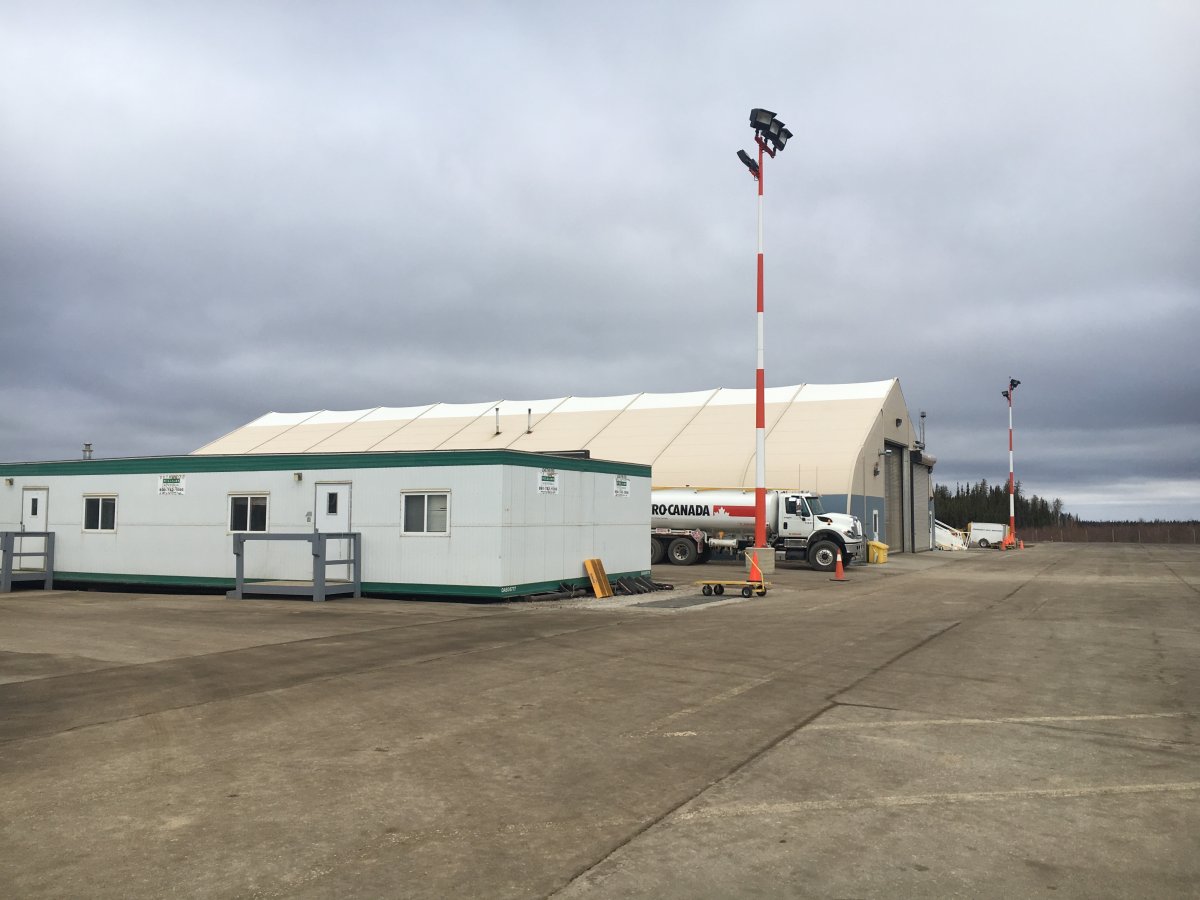One year after an enormous and fast-moving wildfire forced a herculean evacuation effort in Fort McMurray, tales of heartbreak and heroism, borne out of one of Canada’s worst-ever natural disasters, are resurfacing.

But amid all the chaos and confusion, some incredible stories about what it took to keep evacuees safe are only now being heard more widely.
READ MORE: Fort McMurray family looks back at birth of first child: ‘May 3 was actually my due date’
Myles Tuttle has quite a story to tell himself. He is the supervisor of Firebag Aerodrome, Suncor Energy’s airport located about a 90-minute drive north of Fort McMurray. Tuttle says even a year after the fires, he often still reflects on how he and his colleagues converted the airport’s maintenance shop into a makeshift hospital and evacuation centre.
“We’re pretty proud of ourselves that we pulled it off,” Tuttle told Global News. “There’s no manual saying how, how to do what needed to be done that day.”
READ MORE: ‘We got the job done’: Nurse describes Fort McMurray hospital evacuation
According to Tuttle, word that the hangar would become a key launching pad for the evacuation effort came quite suddenly on May 3, 2016, the day the evacuation was ordered.
Watch below: Video of some of Global News’ coverage of the Fort McMurray wildfire in the spring of 2016.
“It started off as a normal day. We all came to work early and turned planes that were transporting our workforce in and out and then at five o’clock or so in the evening, we sat down for supper and I got a call from our Calgary operations folks saying that they were evacuating Fort McMurray and that our role was probably going to change to support that in some way, and they were right.”
Tuttle said his crew jumped to work, sweeping out and sanitizing the maintenance shop so it could be safely used by medical professionals.
“We had, you know, people that were critically in need of transport to Edmonton at the front closest to the door. We’d bring in ambulances, stage them, triage them, prepare them for transport – either on a commercial carrier or on a charter medevac flight – and get them out of here as quick as we could.
“It was airplane after airplane.”
According to Tuttle, the bulk of the flight and medical activity took place during the first three days after the evacuation was ordered. He says in those three days, his airport saw about 12,000 people come through, roughly the equivalent of a normal month’s worth of traffic.
“So that just kept going for the rest of the week and into most of the rest of the month,” he said. “We needed to be the point where those people got from Fort McMurray to Edmonton.”
READ MORE: ‘This is insane’: Dramatic video shows Fort McMurray residents fleeing raging wildfire
Tuttle says he and his crew became a closer-knit team as they worked endless hours to undertake the gargantuan task that faced them.
“At the moment, we didn’t have time to take pictures, reflect on or really appreciate what we were doing. It was just react and adapt to the situation as it changed. So, I’m really proud of the team here. How everybody foresaw what needed to be done and got it done. We’ve never done anything like it.”
View a photo gallery of the Firebag Airport below:
Tuttle also praises the work of those in the health sector who helped the hangar become a key staging ground for evacuees needing medical attention.
“I credit Alberta Health with bringing everything they needed up here and setting it up,” he says. “All they needed from us was real estate. They pulled a lot off real quick.
“I was floored… I’m sure they must have a book on how to do that.”
Tuttle estimates the hangar was home to about 40 hospital beds at its peak.
READ MORE: Heroic measures praised during the Fort McMurray hospital evacuation
“I often reflect on how our little maintenance shop became the Northern Lights Health Centre,” he says. “Everybody worked together and emerged as a stronger team because of it.”
-With files from Reid Fiest







































Comments